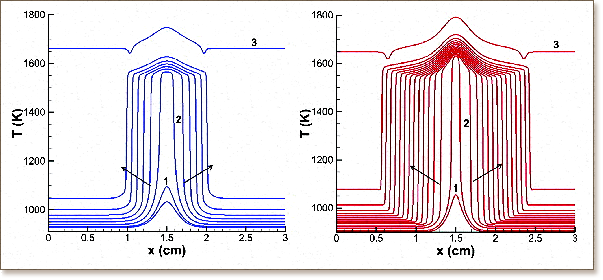

A computational study of syngas auto-ignition characteristics at high-pressure and low-temperature conditions with thermal inhomogeneities
P. Pal, A. B. Mansfield, M. S. Woodridge, H. G. Im
Combustion Theory and Modelling, 19(5): 587-601, (2015)

A computational study was conducted to investigate the characteristics of auto-ignition in a syngas mixture at high-pressure and low-temperature conditions in the presence of thermal inhomogeneities. Highly resolved one-dimensional numerical simulations incorporating detailed chemistry and transport were performed. The temperature inhomogeneities were represented by a global sinusoidal temperature profile and a local Gaussian temperature spike (hot spot). Reaction front speed and front Damköhler number analyses were employed to characterise the propagating ignition front. In the presence of a global temperature gradient, the ignition behaviour shifted from spontaneous propagation (strong) to deflagrative (weak), as the initial mean temperature of the reactant mixture was lowered. A predictive Zel'dovich–Sankaran criterion to determine the transition from strong to weak ignition was validated for different parametric sets. At sufficiently low temperatures, the strong ignition regime was recovered due to faster passive scalar dissipation of the imposed thermal fluctuations relative to the reaction timescale, which was quantified by the mixing Damköhler number. In the presence of local hot spots, only deflagrative fronts were observed. However, the fraction of the reactant mixture consumed by the propagating front was found to increase as the initial mean temperature was lowered, thereby leading to more enhanced compression-heating of the end-gas. Passive scalar mixing was not found to be important for the hot spot cases considered. The parametric study confirmed that the relative magnitude of the Sankaran number translates accurately to the quantitative strength of the deflagration front in the overall ignition advancement.